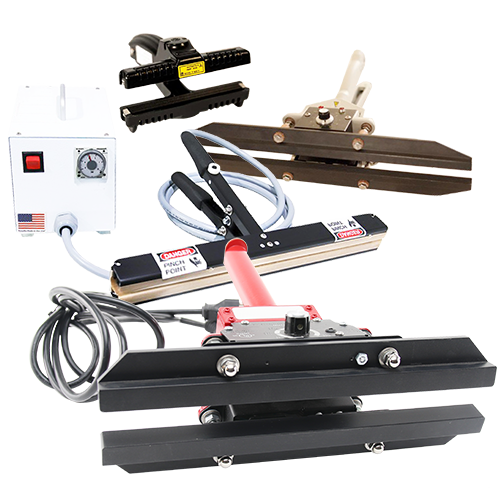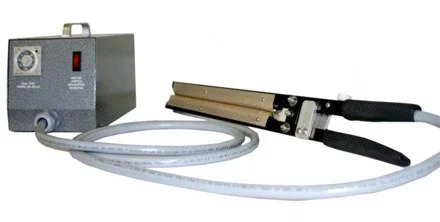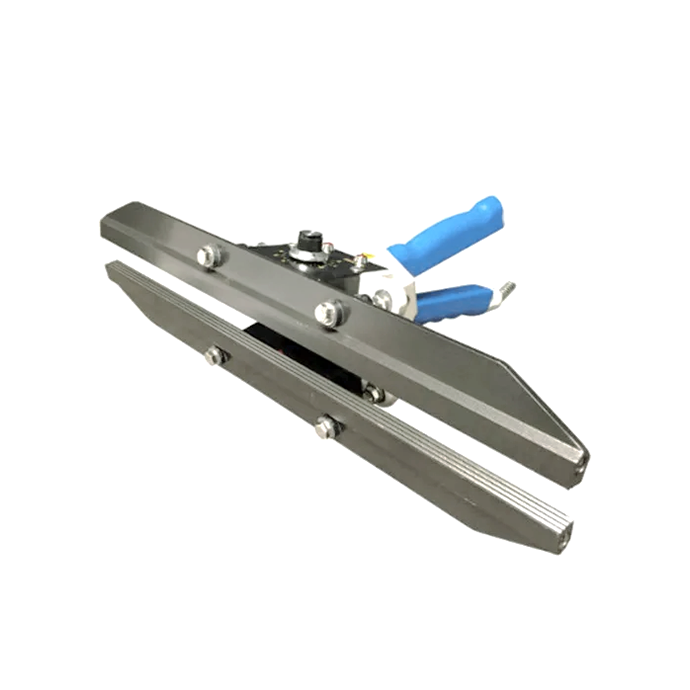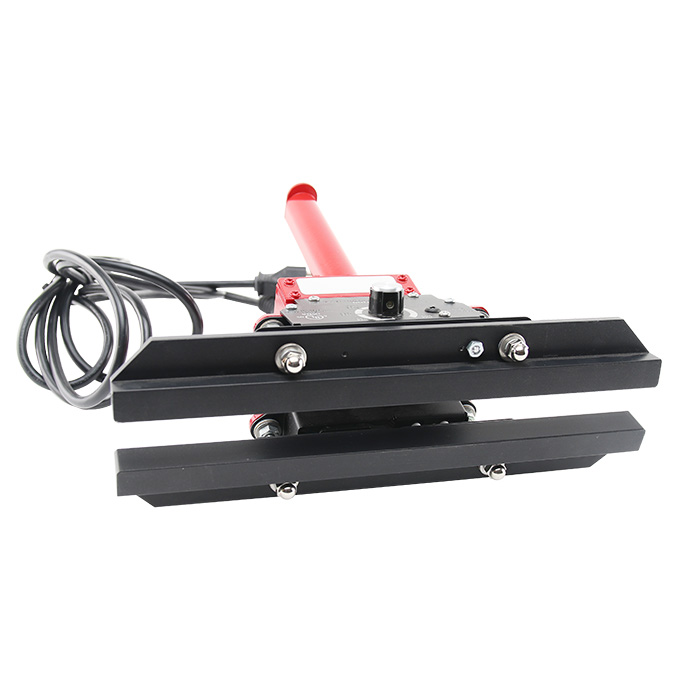
What Style of Hand Sealer is Right For You?
In the complicated world of packaging and distribution, having a small problem in packaging can lead to a lot of larger problems down the road. For anyone who has tried to work out what the right kind of sealer is for you, this is a great resource to learn some of the different hand held / portable heat sealers.
Clamp Style

T-Clamp
This is one of the more common designs for hand-held heat sealers. With the handles and pivot point centered behind the seal bars, you get uniform pressure along the length. For wider seals, this angle also makes it easier to have full contact of the seal bars. For most users, having it open and ready to position the packaging makes for a quick and easy seal. For some projects that require a more careful hand, look for T-Clamp style impulse sealers with a spring assisted closed neutral position. The clamp can grip the material so you don't have to hold while sealing.

Scissor
One of the more well known styles of sealers thanks to tabletop Impulse Heat sealers and hair irons. This style of sealer leaves a wide and easy to maneuver seal area that mimics the scissor motion operators already know. The downside to this style is having the handle / pivot point on one side means getting uniform pressure along the seal length is almost impossible. The seal bar closest to the handle will meet and get more pressure vs the outside corner. For shorter, quick seals this can be fine, but for longer seal lengths this can cause some issues.
Heating Technique

Constant Heat
The constant heat sealer is the traditional method for sealing a variety of things. At its most simple, a constant heat Iron is a device with a flat sealing surface that is heated up and retains the heat until the production is complete. From metal rods left in fire to heat up, to home clothes irons, to the more robust industrial handheld sealer with temperature controllers - a constant heat unit is great for a quick seal.
One of the complaints about this style aside from the heat up time is the danger of a constant heat sealer. Especially for hand held sealers, attention must be paid to handling the seal area while the device is on (and even for a while after production). For projects with longer intermittent breaks between seals, the hot surface will remain a hazard until sufficiently cool for workers if left in the wrong place. Conversely, for projects where a lot of movement and quick sealing is required, constant heat is a great choice. It does not have the (slight) delay in engaging a seal like an impulse would, and can work through thicker materials more reliably, but can run into issues with thinner or more thermally reactive materials. Because the temperature is constant, operators can overheat a seal and cause the base material to deteriorate.

Impulse
To help offset the issues constant heat sealers would run into, the Impulse Sealer was developed. Operating under similar mechanics to a lightbulb, an impulse sealer uses a uniform strip of metal captured under heat resistant Teflon tape. A current is applied to the wire and the metal's natural resistance causes the metal to heat up as electricity flows through it. Providing heat this way allows for a very quick ramp up time from turning on to sealing (vs the constant heat's warm up time), and will similarly cool down quickly between seals to be safe to the touch. This more controlled temperature makes it better for poly coated or thermo-plastic packaging materials like Polyethylene and Polypropylene - or for high performance materials with a small working seal temperature range like Tyvek®.
One of the main drawbacks to an impulse sealer is the introduction of consumables. Both the teflon tape, and heating elements will need to be replaced periodically. While those consumables are relatively inexpensive, they do represent an ongoing cost. The benefit to this system is it allows for smaller and more affordable sealing models to be produced. Rather than needing to rely upon an element or the teflon infused seal bars to remain in good working order, the replacement pieces can be swapped out year after year.

For those looking for some of the highest standards for sealers should look at the Heavy Duty Constant Heat Sealer. It comes with a DOD NSN Number so you know you are getting the same high quality seal every time.
